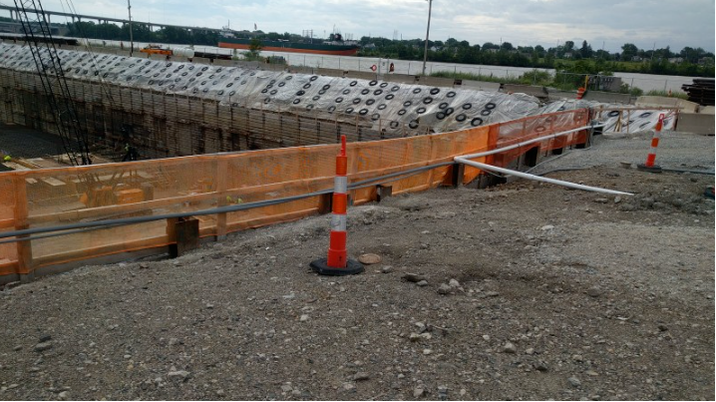Geotechnical Geologist Solutions for Accurate Dirt and Rock Evaluation
Geotechnical Geologist Solutions for Accurate Dirt and Rock Evaluation
Blog Article
A Comprehensive Exam of the Providers Offered by Consulting Engineers in the Area of Geotechnical Design: From Site Examination to Job Execution
Consulting engineers in geotechnical engineering play a pivotal function in the successful execution of construction jobs, beginning with extensive website investigations that disclose critical subsurface problems. Their competence expands to dirt residential property analyses, environmental effect assessments, and the cautious surveillance of task execution, making certain alignment with safety and sustainability criteria.
Significance of Geotechnical Design
Geotechnical engineering is a critical discipline that underpins the security and sustainability of civil framework tasks. By understanding the mechanical habits of soil and rock products, geotechnical engineers examine the suitability of websites for different buildings, consisting of structures, bridges, and dams. This fundamental analysis makes sure that frameworks can withstand environmental variables and loads without experiencing failing.
The value of geotechnical engineering expands past plain structural safety and security; it also includes ecological stewardship. Correct geotechnical evaluations add to reducing the environmental influence of construction. Via cautious evaluation of soil homes and groundwater conditions, designers can design foundations and retaining frameworks that mitigate dangers such as disintegration and landslides, advertising long-term security.
Additionally, geotechnical design plays an essential role in task price monitoring. geotechnical works. By determining possible problems early in the layout phase, engineers can advise proper solutions, therefore preventing costly hold-ups and redesigns throughout construction. This positive approach not only boosts project effectiveness but likewise considerably decreases dangers connected with unpredicted site problems
Site Investigation Strategies
Effective site examination methods are vital for collecting exact information about subsurface conditions before building. These strategies promote the understanding of the geological and hydrological atmosphere, which is important for making certain the stability and safety and security of suggested frameworks.
Common techniques utilized in site investigations include borehole boring, which allows designers to remove dirt samples at various depths, offering understandings into stratification and material kinds. Additionally, geophysical studies, such as seismic refraction and electric resistivity, offer non-invasive methods to assess subsurface qualities over larger locations. These techniques can aid recognize abnormalities without substantial excavation.
Examination pits are another valuable strategy, providing straight monitoring of soil layers and allowing in-situ screening. geotechnical works. This method is particularly valuable for superficial excavations and can aid assess groundwater degrees. Cone infiltration examinations (CPT) are significantly used, as they supply continuous accounts of soil resistance, which aids in establishing dirt strength and layering.
Each of these techniques plays an essential role in creating an extensive understanding of site conditions, enabling consulting engineers to make enlightened decisions and recommendations throughout the project lifecycle. Exact data collection during the website investigation phase is critical to mitigating dangers and making certain successful task application.
Soil Residential Property Analysis

The analysis procedure usually entails a combination of lab examinations and area investigations. Secret residential or commercial properties such as shear stamina, compressibility, leaks in the structure, and wetness material are evaluated to identify the dirt's viability for construction purposes. Typical examinations, consisting of the Atterberg limits, Proctor compaction, and triaxial shear examinations, are typically employed to gather information on soil behavior.
Along with these examinations, in-situ methods such as the Criterion Infiltration Examination (SPT) and Cone Infiltration Test (CPT) provide useful understandings right into soil stratigraphy and thickness. The results of these assessments notify designers concerning prospective difficulties, such as dirt liquefaction or negotiation, allowing them to devise suitable mitigation techniques.
Environmental Influence Evaluation
Ecological influence assessment plays a critical function in click here now the planning and implementation of engineering tasks, especially in geotechnical design. This procedure involves analyzing the prospective ecological repercussions of suggested jobs on soil, water, air high quality, and bordering environments. Consulting designers use numerous methods, consisting of website analyses, modeling, and area studies, to determine and quantify these impacts.
The examination typically begins with the recognition of baseline ecological conditions, which acts as a referral for anticipating potential changes. Designers analyze elements such as disintegration, groundwater contamination, and environment disruption, ensuring that all appropriate ecological laws and guidelines are complied with throughout the project lifecycle. Stakeholder engagement is likewise an important part of the assessment procedure, as it fosters communication in between job developers, local communities, and governing bodies.
Furthermore, reduction strategies are created to address recognized influences, permitting engineers to suggest options or adjustments to forecast styles that boost sustainability. This aggressive technique not only decreases adverse results on the setting yet also advertises public count on and compliance with environmental legislation. Inevitably, effective environmental impact assessment strengthens the total honesty my blog and stability of geotechnical engineering jobs, supporting responsible development techniques.
Job Implementation and Monitoring

Surveillance is an essential element of job execution. Designers use various techniques, such as instrumentation and field tests, to examine soil behavior and structural feedbacks in real-time. This constant surveillance enables the recognition of any discrepancies from anticipated performance, enabling timely treatments to mitigate risks.
Additionally, speaking with engineers preserve open interaction with contractors and stakeholders throughout the procedure. Normal site inspections and development records guarantee that all celebrations are notified concerning project standing and any kind of emerging concerns. By cultivating collaboration and openness, consulting designers facilitate a much more efficient application process, therefore boosting project outcomes.
Ultimately, effective task execution and tracking not only promote safety and quality standards however also add to the overall success of geotechnical jobs, ensuring they fulfill their designated objectives sustainably and responsibly.

Conclusion
In conclusion, the role of seeking advice from designers in geotechnical design includes a vital sequence of services that ensure project success. Ultimately, the complex contributions of consulting engineers are vital in dealing with the intricacies of geotechnical difficulties in modern design projects.
Report this page